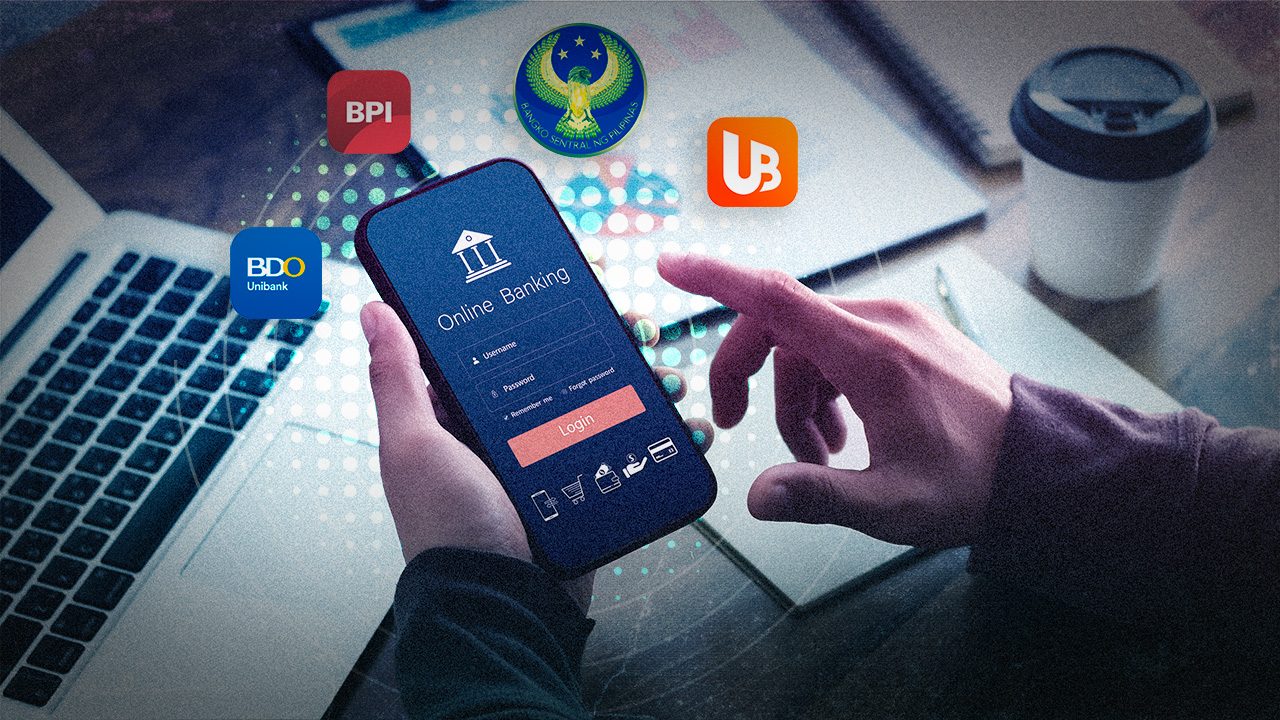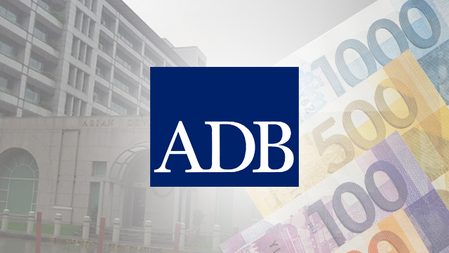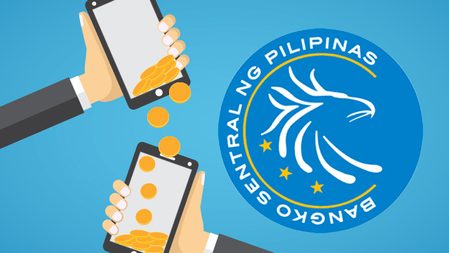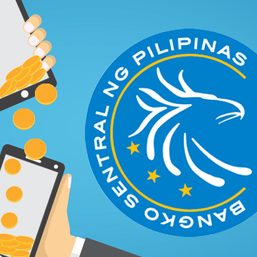SUMMARY
This is AI generated summarization, which may have errors. For context, always refer to the full article.

SINGAPORE – While the rise of digital banks in the Philippines has brought financial services to a techie new generation and to financially underserved segments, it seems that the industry’s traditional titans are still hesitant to go purely digital.
Digital banking in the Philippines has been on the rise since 2021, when the central bank allowed new players to shed their physical bank branches and go all-digital. Recently, President Ferdinand Marcos Jr. himself touted the Philippines’ readiness to embrace digital banking, especially as a way to drive inclusive growth
“The Philippines recognizes the growing presence of digital banking and the importance of inclusive finance in our financial landscape, so that no one will be left behind in our pursuit of progress and prosperity,” Marcos said, appearing as a “Star Wars-inspired hologram” before a crowd of international bankers and fintech leaders at the Singapore FinTech Festival on November 15.
“That is why we are putting great emphasis on the digitalization of all cashflows – regardless of amount or scale – so that Filipinos can start building a digital profile,” the President added.
But just how strong is digital banking in the country, and do the biggest banks plan on entering the space too?
State of digital banking
The Bangko Sentral ng Pilipinas (BSP) first opened its doors to the idea of fully digital banks in December 2020, releasing guidelines on how to obtain a digital banking license.
According to the BSP, a digital bank “offers financial products and services that are processed end-to-end through a digital platform and/or electronic channels with no physical branch/sub-branch or branch-lite unit offering financial products and services.”
Digital banks can start operations with much less capital, having a minimum capitalization of just P1 billion. Meanwhile, a universal bank – BDO Unibank (BDO), Bank of the Philippine Islands (BPI), Metrobank, and most other big banks – can be required to keep up to P20 billion in minimum capital if they have more than 100 branches.
By August 2021, the BSP had approved six digital bank licenses: UNObank, UnionDigital Bank, GOtyme, Overseas Filipino Bank, and Tonik Bank. The last digital banking license was granted to Maya.
Here’s how they rank in terms of total assets and deposit liabilities.
Maya Bank and UnionDigital are the clear leaders in the digital banking space in terms of both asset size and deposit size. As of June 30, 2023, Maya had nearly P25 billion in deposits, giving it an edge over UnionDigital’s P20 billion.
Maya Bank is operated by Voyager Innovations, the technology arm of PLDT. In 2022, Voyager Innovations became the second tech unicorn in the Philippines, with its rival Mynt, the operator of GCash, being the country’s only other tech unicorn. GCash has yet to announce plans to set up its own digital bank.
Meanwhile, the government’s Overseas Filipino Bank – a wholly owned subsidiary of Land Bank of the Philippines – comes in last in terms of asset size, while UNO Digital Bank is the smallest in terms of deposit size.
As it is, digital banks still have plenty of room to grow before they approach anywhere near the size of traditional universal and commercial banks. For instance, Union Bank of the Philippines (UnionBank), the parent company of UnionDigital, has a total asset size of more than P967 billion – making it almost 40 times bigger than its digital bank subsidiary.
To allow these digital banks to grow, the central bank has stuck to a three-year moratorium on the grant of digital banking licenses since 2021.
“The closure of the application window will allow the BSP to monitor the performance and impact of digital banks,” said then-central bank Governor Benjamin Diokno. “We need to ensure that the business environment continues to allow healthy competition among banks.”
That restriction could be lifted by 2024. But even with new digital banking licenses potentially up for grabs by next year, some of the country’s biggest banks don’t seem too keen on setting up an all-digital bank.
Big banks hesitate
For BPI president and chief executive officer Jose Teodoro “TG” Limcaoco, the offer doesn’t seem too enticing.
“If you look at the license of digital banks, it’s really to operate a bank without a physical presence. So why does a BPI, why does a BDO need that?” Limcaoco told reporters last July 20.
Limcaoco said that for an existing bank like BPI, getting a digital bank license would make “no difference” since it doesn’t need that license to be digital.
“In fact, I would say BPI has the best digital app, better than any other [digital] bank in this country,” he said. “You can print that.”
While BPI has no plans to set up a separate digital bank anytime soon, it could still get into the digital bank space through its merger with Robinsons Bank Corporation (RBC). Through the merger, BPI will get RBC’s 20% stake in GoTyme Bank. GoTyme, a joint venture between the Gokongwei Group and digital banking group Tyme, is one of the six banks that received a digital banking license in 2021.
And although the country’s big banks may not be eyeing to set up their own digital banks soon, they haven’t stood still in terms of digitalization. BPI has incorporated AI into its consumer banking experience, with its newest app featuring “AI-powered insights.”
Other banks have also been revamping their mobile apps. BDO, the Philippines’ largest bank, is nudging its users to switch from its old BDO Digital Banking app to its newer BDO Online app, which adds new features. Metrobank also had all of its users switch to its new app on November 21, which now allows cardless withdrawals, among other features.
Meanwhile, Security Bank has been incorporating Microsoft 365 Copilot as an “AI-powered productivity tool” to increase internal productivity. Security Bank also garnered recognition at the Boomerang Awards 2023 for its use of AI in advertising campaigns, leading to a 170% increase in leads for home loan products and more than doubling the bank’s credit card approvals in 2022 compared to 2021.
Why UnionBank went digital
So far, UnionBank is the only private universal bank that has set up its own separate digital bank: UnionDigital, a wholly owned subsidiary.
Years before establishing UnionDigital, UnionBank had already positioned itself as a digital-ready bank. So, why still set up a separate digital bank?
“We’ve been asked that a lot,” said Henry Aguda, president and CEO of UnionDigital. “[It’s] because the digital banking framework allows us a lot of flexibility.”
Aguda explained that with the lower capital requirements and no physical branches, digital banks can “do more with their capital if we keep it digital.”
Having more capital freed up also allows digital banks to serve a broader range of customers who might otherwise be left out by big banks. For instance, UnionDigital can still profitably serve a P1,000 loan whereas a larger bank might prioritize a P100,000 loan since the bank has a higher cost-to-serve.

“[Traditional] banks have the branch, the vault, the reserve requirements, the this, the that… 20-year-old tech systems trying to work together. Agility is limited,” said Mike Singh, UnionDigital’s chief commercial and revenue officer.
“We’re cloud-based. We’re fully digital. No branches. Paperless, faceless. We can profitably serve a 1,000 peso loan,” he added. “That’s the flexibility that we have.”
Being designated as a digital bank also helps them attract more fintech talents than a usual bank and also keeps them focused on just that: being digital.
“What can we do that a regular commercial bank can’t do? I think it’s a lot about focus,” the digital bank president said. “Our regulators from BSP would rather we do more digital than non-digital stuff.” – Rappler.com
Disclosure: The author was part of a media delegation to the Singapore FinTech Festival 2023 sponsored by UnionBank, an exhibitor in one of the festival’s 16 international pavilions.
Add a comment
How does this make you feel?














![[Finterest] Is a digital bank safe, and how can you best use it?](https://www.rappler.com/tachyon/2024/05/digital-banks-safety-may-11-2024.jpg?resize=257%2C257&crop_strategy=attention)
There are no comments yet. Add your comment to start the conversation.